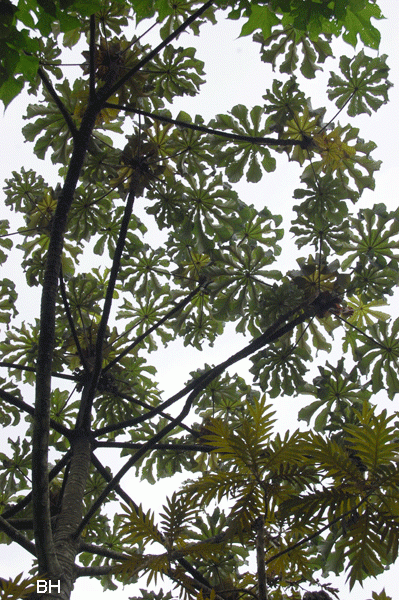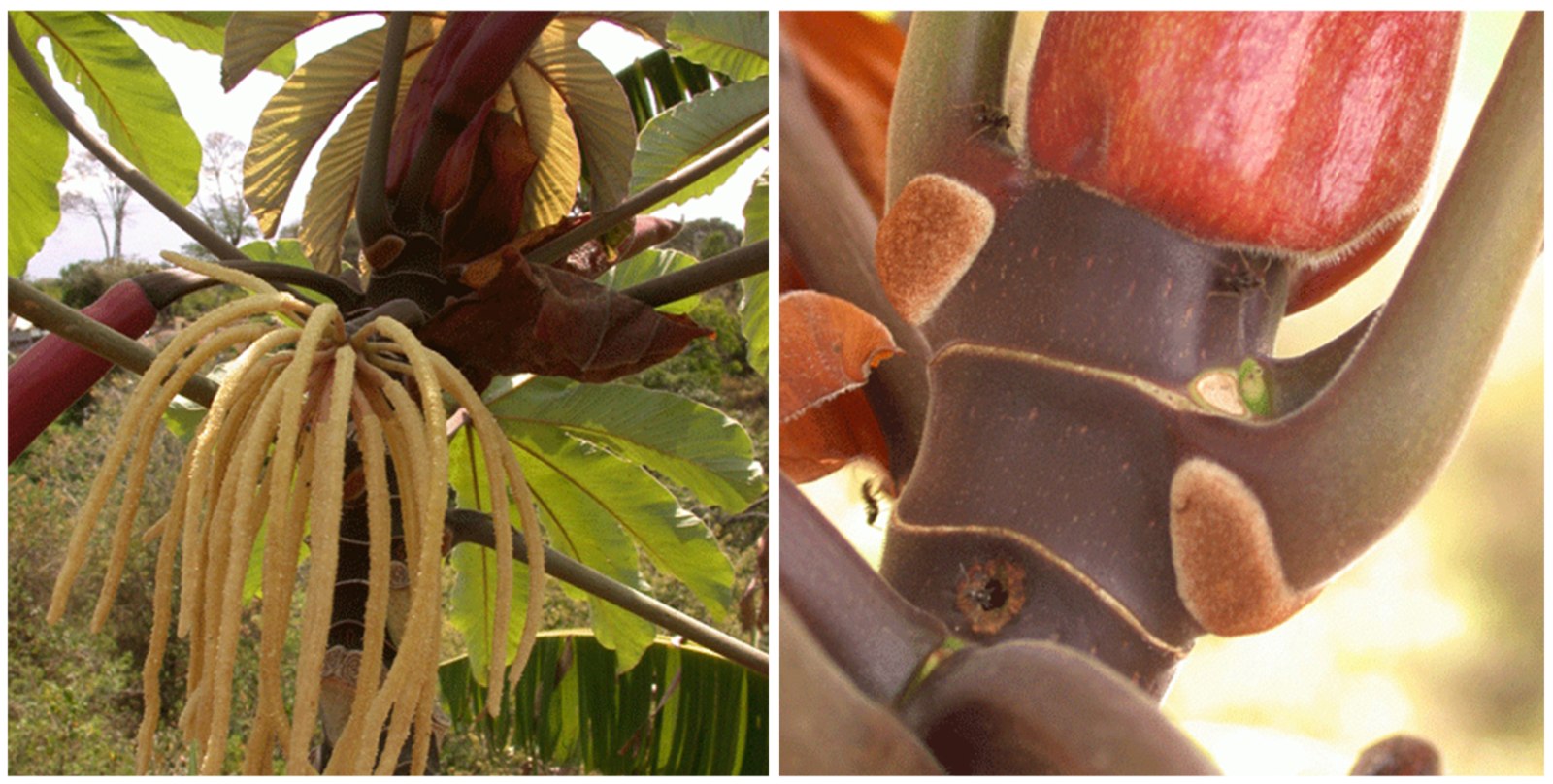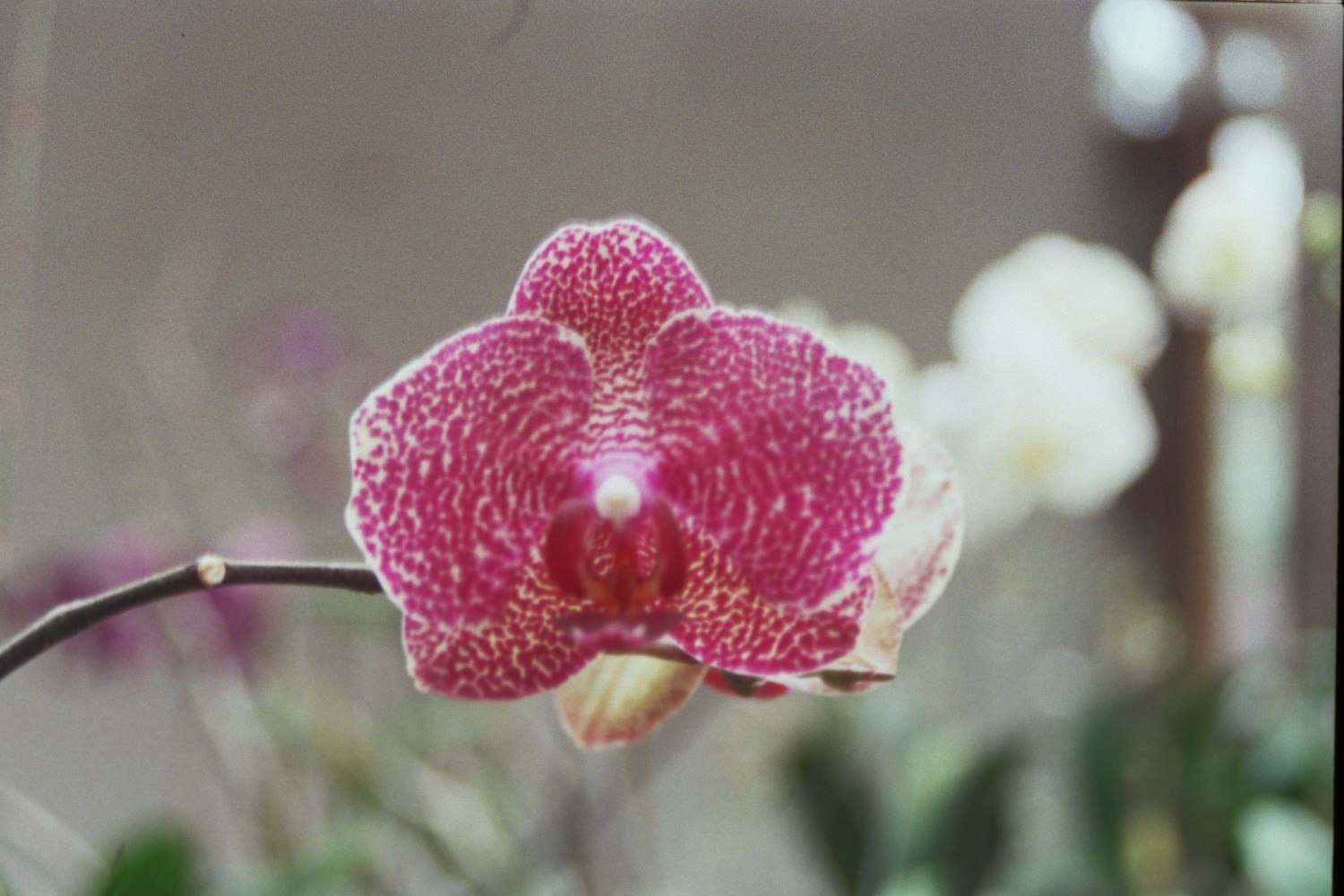
Bees, bats, butterflies, and hummingbirds visit flowers. Howlers and caterpillars munch on leaves. Bats and birds visit shrubs and trees to seek out ripe fruit. These are evident interactions between animals and plants, but some relationships in nature are a bit more obscure. Ant-plant interactions fall into this category. Ants may not be very popular inhabitants of people’s homes, but for certain plants they mean protection against animals that might eat them or vines that begin to envelop them. These particular ant species will seek shelter only in plant structures, not in your home.
Two “ant plants” that are common in Nosara are the ant acacia and cecropia (guarumo in Spanish). Although the acacia may not be thought of as a typical garden tree, it is quite attractive with its feathery foliage and odd-looking conical thorns that give it the name bull-horn acacia (cornizuelo in Spanish). If you have accidentally brushed up against one of these thorny trees, you know they are crawling with biting and stinging ants. The area around the tree base may also appear quite bare (manicured by the ants). Ants vigorously defend the plant’s foliage from would-be leaf eaters. Somehow Rufous-naped Wrens are able to thwart the ants and nest in acacia trees, actually taking advantage of the ant defense team.
The large thorns on the tree are essentially ant condos, and food and drink are nearby. Several glands at the base of each compound leaf provide nectar. And for take-out, what could be better than Beltian bodies, yellowish food morsels, rich in protein and lipids, thatdevelop at the tips of the new leaflets. In 1874 Thomas Belt described this fascinating system in his book “The Naturalist in Nicaragua.”* He says of these morsels (later named after him), “The fruit-like bodies are about one-twelfth of an inch long, and are about one-third of the size of the ants; so that an ant carrying one away is as heavily laden as a man bearing a large bunch of plantains.”
Cecropia trees also house ants – not in thorns, but in the hollow sections of their branches and trunks. These trees nourish their little guard ants with Müllerian bodies, small white dabs rich in glycogen, which are produced on a felt-like pad at the base of each leaf stem. In addition, mealy bugs sometimes inhabit the stems and secrete a honeydew substance that the ants harvest.
If you do not have ant plants close to your home, look for these easy-to-identify trees next time you head to Playa Guiones at Nosara. They are classic examples of tropical forest mutualisms, whereby, plants and animals benefit from one another via intricate exchanges of goods and services.

NOTE: Willow Zuchowski is author of Tropical Plants of Costa Rica: A Guide t o Native and Exotic Flora; she lives in Monteverde, where she directs a native plant garden project called ProNativas. This article was published in 2007 by The Voice of Nosara







Comments